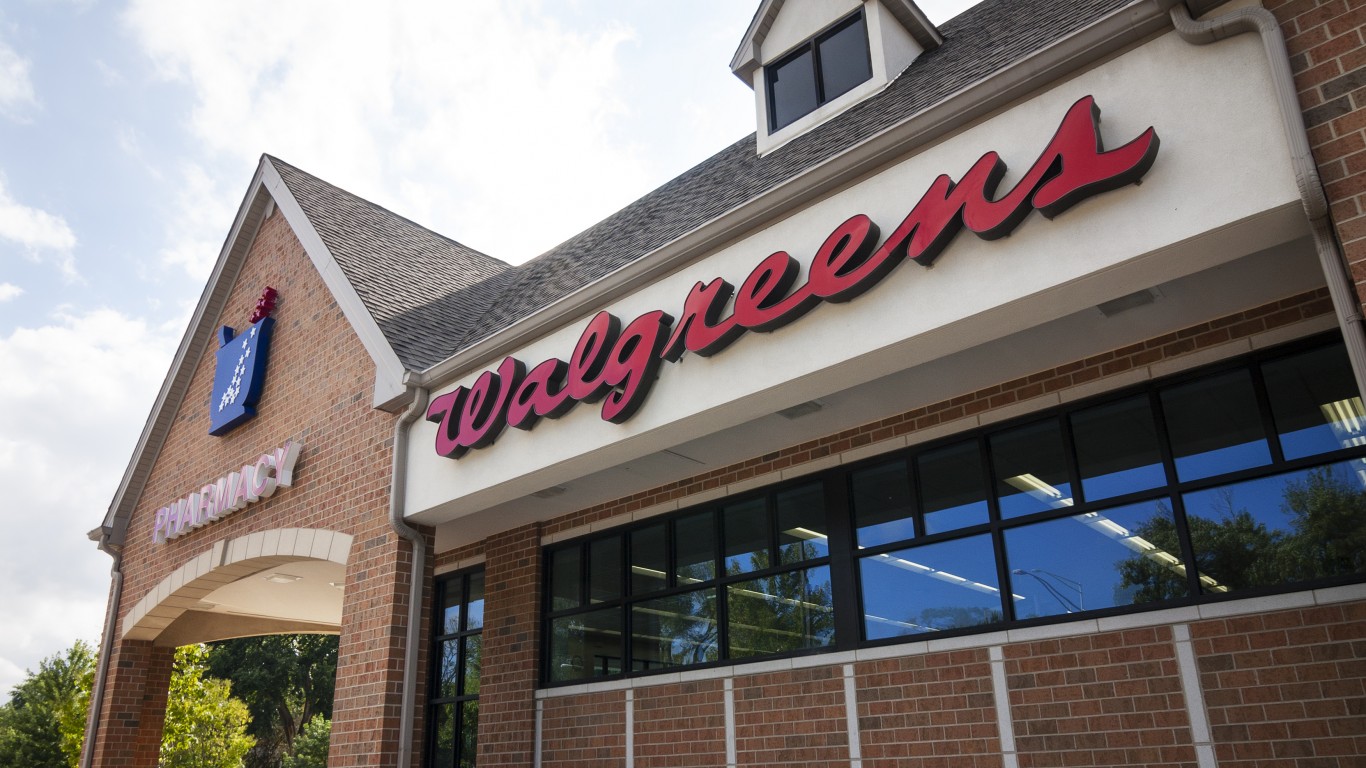
With just three more trading days left in 2020, there are six stocks on the Dow Jones industrial average index that are trading at least 10% below their closing price at the end of 2019. Unlike the Dow’s top performers, where all five were tech stocks, the six worst performers are more diversified.
Two of the six are health care stocks while one each comes from industrial, financial services, energy and tech sectors. Combined, these six stocks account for about 12.85% of the Dow.
[in-text-ad]
Boeing
No one should be surprised that the Dow’s biggest loser in 2020 is Boeing Co. (NYSE: BA). The company’s bestselling aircraft, the 737 Max, was grounded in March of 2019 and not recertified for commercial operation until late last month. The COVID-19 pandemic has reduced air travel globally by 60% to 70%, and many industry analysts and participants are not looking for airlines to recover until 2023 or even 2024, although one analyst is upbeat on the company’s performance in 2021. Boeing stock trades down about 36% compared to its 2019 closing price.
Based on a current share price of around $218 and a consensus price target of $231, the stock has an implied upside of around 6%. Shares trade at a multiple of around 83 times expected 2021 earnings of $2.64 a share. Boeing suspended its dividend last year, and the stock’s 52-week range is $89.00 to $349.95.
Walgreens
More of a surprise is the Dow’s second-worst performer, Walgreens Boots Alliance Inc. (NASDAQ: WBA). For its 2020 fiscal year that ended in September, the company said the pandemic cost it about $0.46 in earnings per share. Walgreens expects to see continued negative effects from the coronavirus outbreak in the first half of its 2021 fiscal year and expects “strong” earnings per share (EPS) growth in the second half of the 2021 fiscal year. Shares have lost 32.7% so far in 2020.
Walgreens’ current share price is around $40, essentially equal to the consensus price target. The stock trades at a multiple of around 7.7 times expected 2022 EPS of $5.17, and the 52-week range is $33.36 to $59.78.
Chevron
Integrated oil and gas giant Chevron Corp. (NYSE: CVX) has put up the third-worst performance of 2020, losing nearly 30% of its market value in 2020. While crude prices started the year above $60 a barrel, the pandemic cut demand so sharply that prices dropped below $25 a barrel and have still not been able to hold above $50. Chevron’s dividend yield is above 6%, the highest of any Dow stock. The company paid $5 billion in an all-stock deal in July to acquire Noble Energy, the first of several all-stock transactions in the oil patch this year.
At a current share price of around $85, Chevron’s potential upside to a consensus price target of nearly $102 is 20%. Its shares traded at a multiple of nearly 30 to expected 2021 earnings, and the stock’s 52-week range is $51.60 to $122.72.
[in-text-ad]
Intel
Chipmaker Intel Corp. (NASDAQ: INTC) has dropped more than 21% so far in 2020. The company’s difficulties in getting its 7-nanometer (nm) production process up and running are unlikely to be solved until late next year. In the meantime, the company reportedly has ordered 7nm chips from Taiwan Semiconductor, one of its chief rivals.
Intel stock currently trades at about $47, implying a potential upside of 10.6% to the consensus price target of $52.05. The stock trades at about 10.2 times expected 2021 earnings, and the 52-week range is $43.61 to $69.29.
Merck
Merck & Co. Inc. (NYSE: MRK) has lost about 11.5% of its market value so far in 2020. The company does not have an entry in the coronavirus pandemic vaccine space, and that could be what has kept investors wary this year. In a hopeful sign for value investors, Goldman Sachs recently raised its price target on the stock and its rating to Buy.
Merck stock trades at around $81, implying a potential upside of 18.5% to the consensus price target of $96.00. The stock’s 52-week range is $65.25 to $92.14, and shares currently trade at about 13 times expected 2021 earnings.
JPMorgan
The only other Dow stock to have posted a loss of 10% so far this year is JPMorgan Chase & Co. (NYSE: JPM). Low interest rates have led to a decline in interest income that reached 9% in the third quarter. Higher trading revenues have helped offset the low rates, and the arrival of COVID-19 vaccines is expected to lift the bank’s credit card business next year.
JPMorgan stock trades at around $126, roughly equal to its consensus price target but nearly 12% below the 52-week high of $141.10. The stock’s 52-week low is $76.91. With expected EPS of nearly $9 in 2021, the shares trade at a multiple of 14 to their current price.
It’s Your Money, Your Future—Own It (sponsor)
Are you ahead, or behind on retirement? For families with more than $500,000 saved for retirement, finding a financial advisor who puts your interest first can be the difference, and today it’s easier than ever. SmartAsset’s free tool matches you with up to three fiduciary financial advisors who serve your area in minutes. Each advisor has been carefully vetted and must act in your best interests. Start your search now.
If you’ve saved and built a substantial nest egg for you and your family, don’t delay; get started right here and help your retirement dreams become a retirement reality.
Thank you for reading! Have some feedback for us?
Contact the 24/7 Wall St. editorial team.





